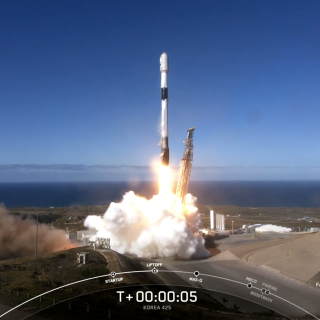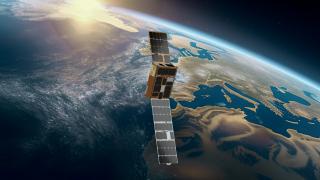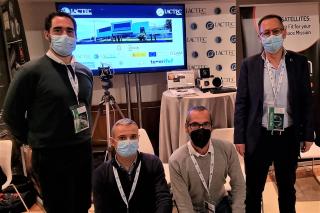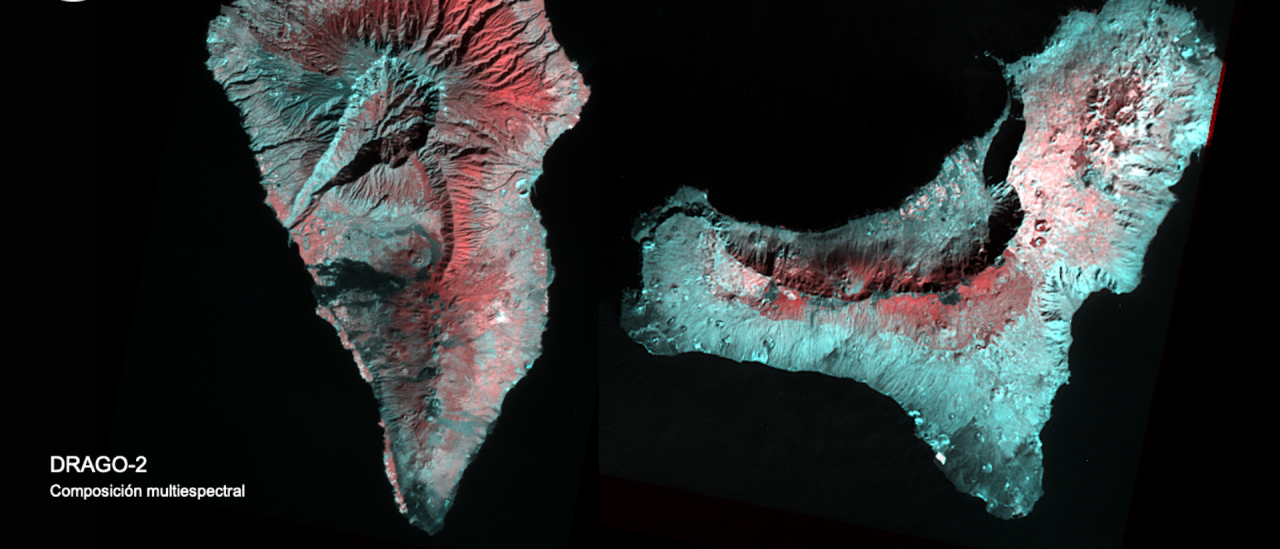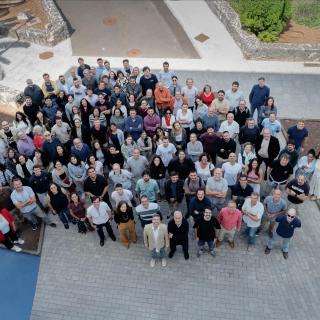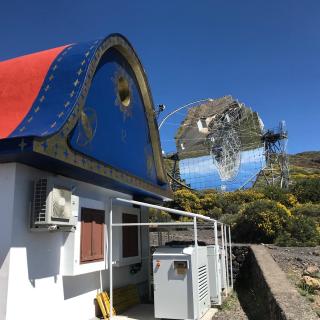The first satellite developed by the Instituto de Astrofísica de Canarias,, which was launched into space last December, has sent back its first images. The quality of the observations shows the perfect performance of its DRAGO-2 infrared camera. The pointing test of its laser optical communications module has also been successfully carried out, making it the first Spanish satellite to use this technology.
Today, at a press conference, the first images obtained with the ALISIO-1 satellite (Advanced Land-Imaging Satellite for Infrared Observations), an Earth observation satellite whose development was led by the IACTEC-Space team of the Instituto de Astrofísica de Canarias (IAC) and which began its journey into space on 1 December, aboard a SpaceX Falcon 9 rocket, were presented.
The event, which was held at the IACTEC building in the Las Mantecas Technology Park (La Laguna, Tenerife), was attended by Fernando Clavijo, President of the Canary Islands Government, and Rosa Dávila, President of the Cabildo of Tenerife, as well as Rafael Rebolo, Director of the IAC, and staff from the IACTEC-Espacio team involved in the project.
The director of the IAC, Rafael Rebolo, thanked the Government of the Canary Islands and the Cabildo of Tenerife for their support and collaboration in IAC projects and stressed that "after these first decades of the IAC, as an international astrophysics centre with two of the best ground-based observatories in the world, our sights are set on the next step, which is to also have space telescopes to complement our capabilities from ground-based observatories; The ALISIO-1 satellite is the demonstration that technically we can do it and that we are competitive, at lower costs than our competitors and with high quality results.
In his speech, the president of the Canary Islands Government, Fernando Clavijo, acknowledged the technological leadership of the IAC over the last fifty years, during which the Canary Islands have been an international benchmark in the observation of the Universe. "Today, an infinite range of possibilities are opening up in the Canary Islands in the field of aerospace technology," he said.
Clavijo recalled the desire "of this Government to ensure that this technological knowledge can be installed in all the Islands in order to diversify the economy, generate employment and retain talent; and in this line we are working with the local councils in a very determined manner, in different programmes, to place ourselves at the national and international forefront and to be able to put the most advanced technology at the service of society".
For the president, "this will only be possible if public institutions and private entities work hand in hand, and in recent years we must be grateful for the work of the IAC and Rafael Rebolo at its head, because they have been strategic for the implementation of the technology industry in the Canary Islands".
For her part, Rosa Dávila, President of the Cabildo of Tenerife, pointed out that "in five years, Tenerife will be the best diversified economy in the Canary Islands. The commitment to the deployment of this satellite, 100% developed in Tenerife, for scientific purposes, is also a commitment to science and technology, and is in addition to other investments in the future led by the Cabildo, such as the development of clean and sustainable geothermal energy, which also bears the seal of Tenerife; this is the future and quality jobs for our people".

A giant step in quality and resolution
ALISIO-1 is equipped with two state-of-the-art instruments. On the one hand, there is DRAGO-2, the most compact infrared space camera in terms of weight, volume and energy consumption, developed entirely at IACTEC-Espacio. ALISIO-1 is the first Spanish satellite to be equipped with a laser optical communications module. This will allow a higher data transmission speed to Earth, as well as a more precise characterisation of the atmosphere over the Canary Islands Observatories.
Overall, ALISIO-1 is a useful satellite for drawing up prevention and action plans for natural disasters, as it makes it possible to monitor fires and volcanoes, studies of desertification and the evolution of crops, floods and fuel spills in the oceans.
The first images processed by the IACTEC-Espacio team correspond to the Chihuahua area in Mexico. It shows, in false colour, some crop areas and their different humidity levels. The quality and resolution of the images are easily appreciated when compared with the images of previous days taken by SENTINEL-2, a fleet of several large, latest-generation satellites developed by the European Space Agency (ESA).
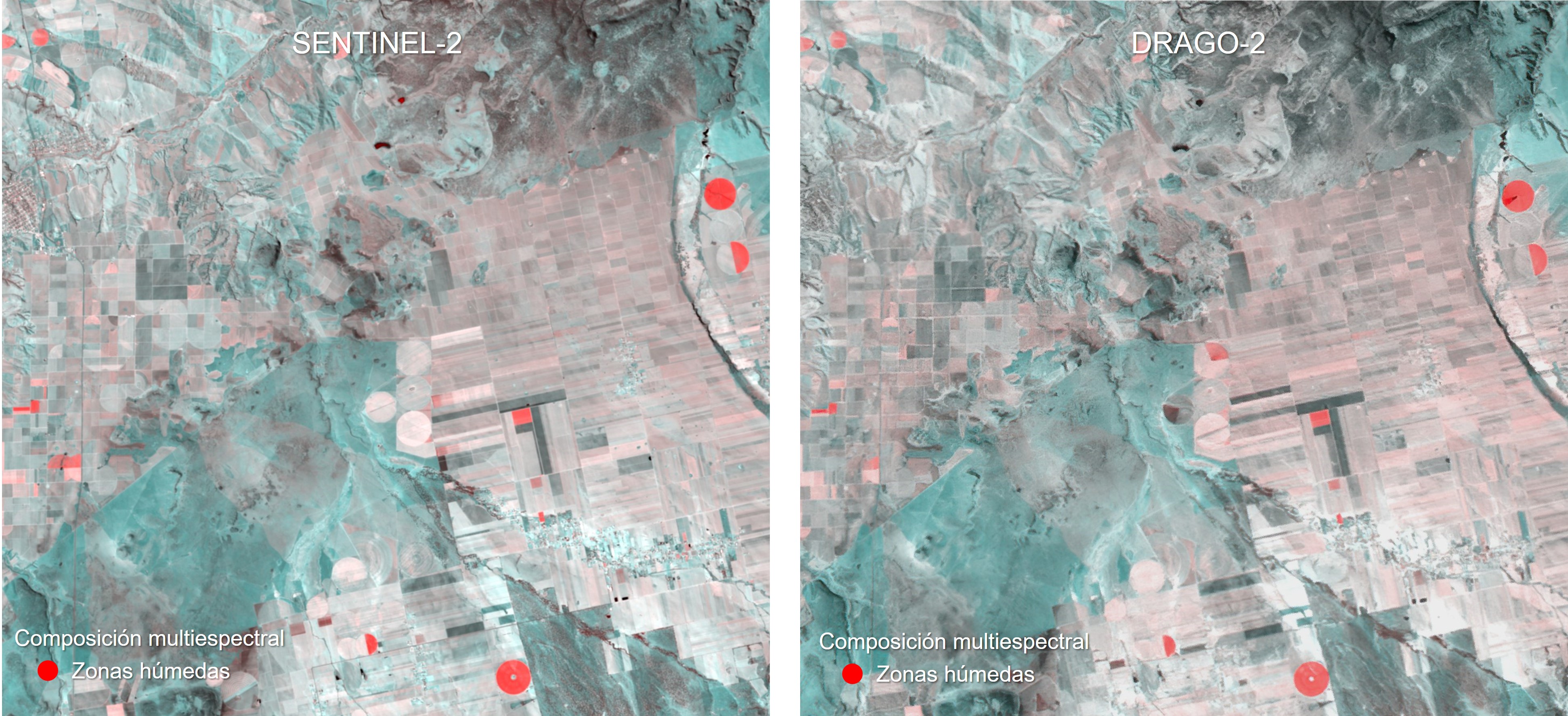
The following selected regions correspond to the mouths of the Guadiana and Guadalquivir rivers in the south of the Iberian Peninsula. They are also false-colour images showing the areas with the highest humidity in reddish tones. The observations demonstrate the perfect performance of the satellite and its DRAGO-2 infrared camera, especially when compared again with the images obtained by SENTINEL-2.
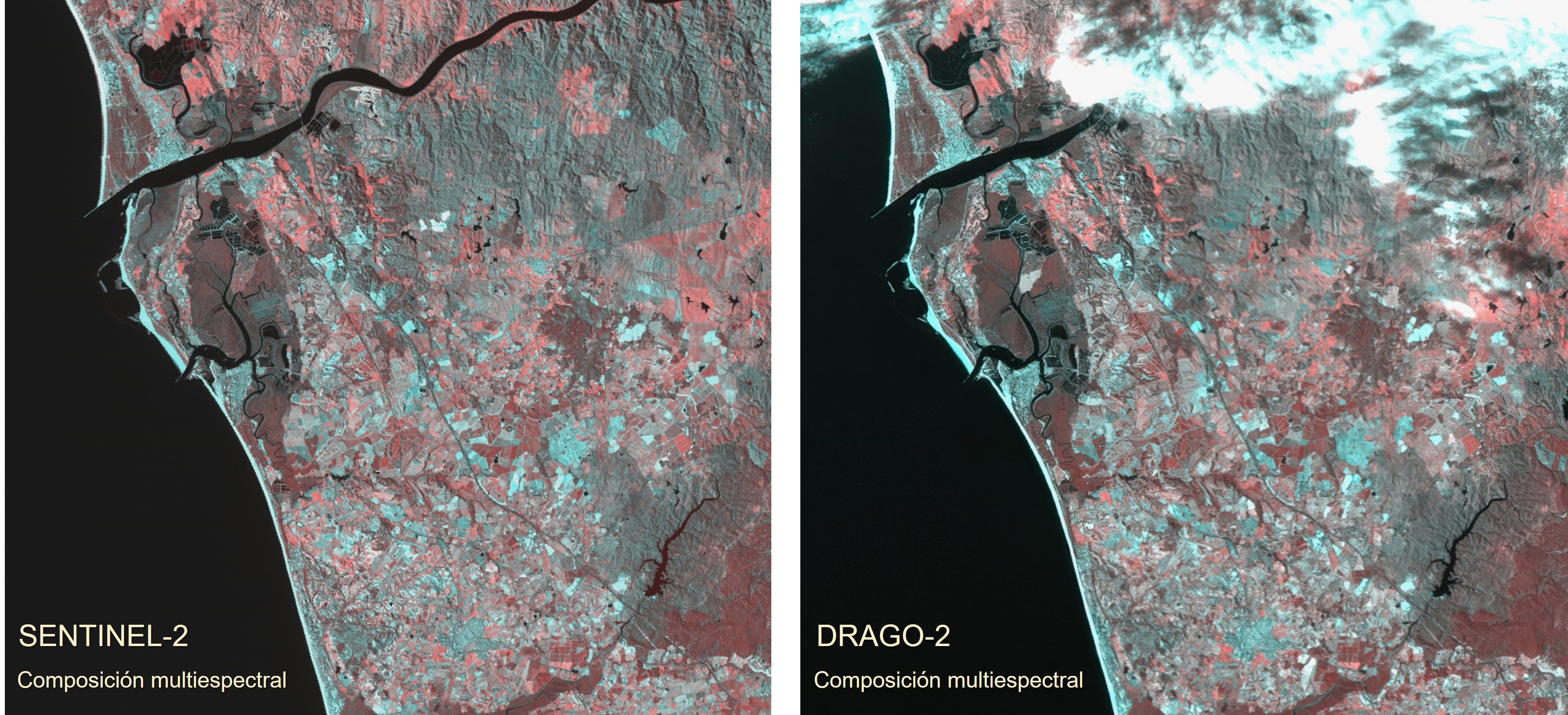
Of particular interest are the images from the area of the Doñana natural park, where the reduction in the current humidity levels can be seen.
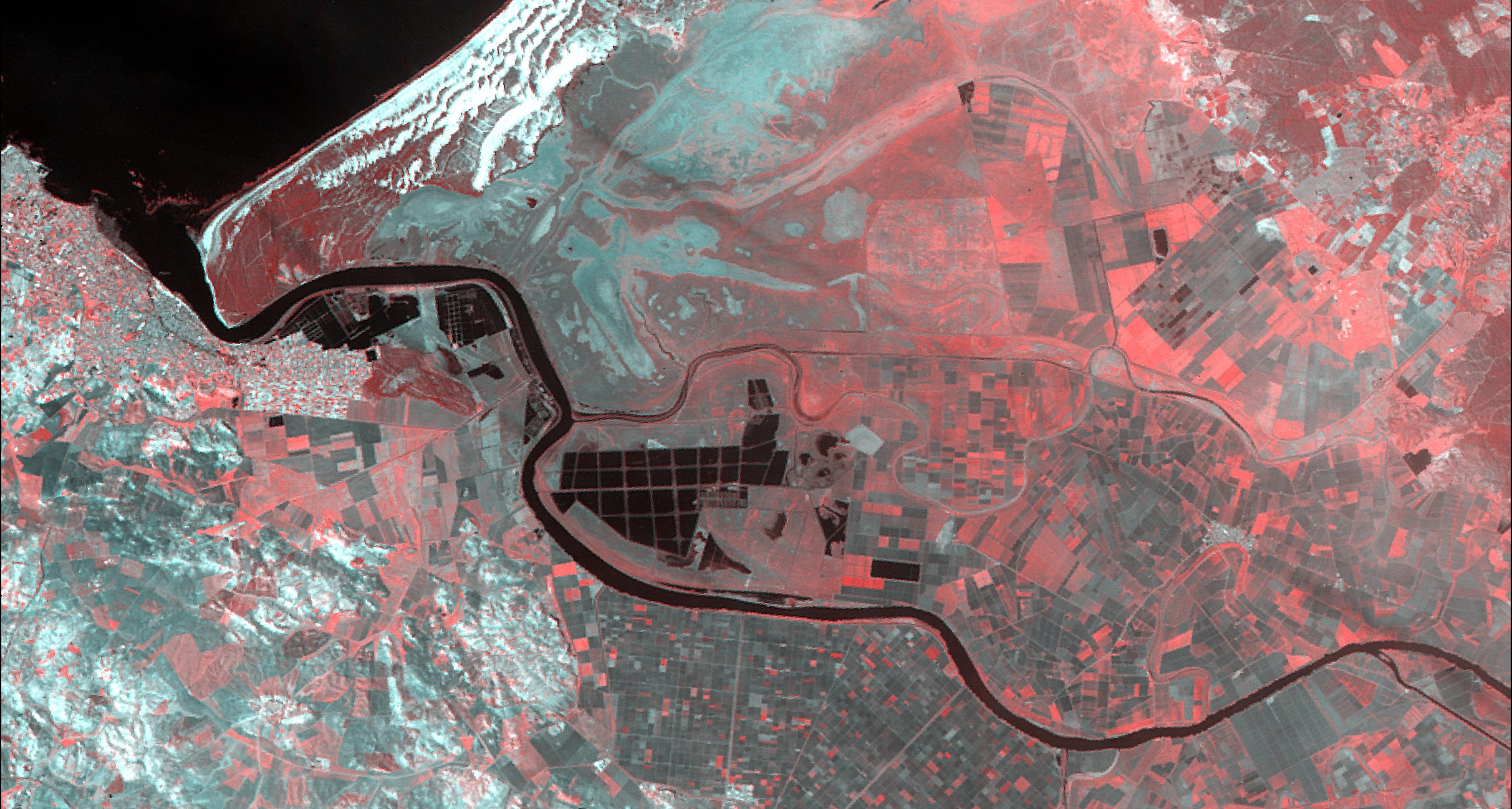
For Álex Oscoz, principal investigator of the project, these images are a clear demonstration of the quality and potential of DRAGO-2 and ALISIO-1: "An instrument developed on the islands is a fundamental factor for the future prevention and monitoring of natural disasters and the consequences of climate change in the archipelago, as well as in other areas of Spain and the world," he explains.
The third set of processed images corresponds to the islands of La Palma and El Hierro. They clearly show how the islands' extensive vegetation benefits from different levels of humidity, depending on multiple factors such as the terrain's orography and its orientation with respect to the trade winds.

"The good performance of the ALISIO-1 satellite during its first weeks in orbit is the result of a year and a half of intense work in collaboration with the aerospace industry, and more particularly with the company Open Cosmos, the platform developer," adds Alfonso Ynigo, systems engineer at IACTEC-Espacio and technical manager of the ALISIO-1 mission.
Advances in optical communication and ongoing projects
In addition to the images obtained by the DRAGO-2 camera, a video of the pointing test performed in the tracking mode of a ground station has also been shown. In this video, images have been acquired with DRAGO-2 to evaluate the ability to keep the satellite oriented towards a specific point on the Earth's surface. The success of the operation demonstrates the satellite's stability under these conditions, which is essential for space-to-Earth communications.
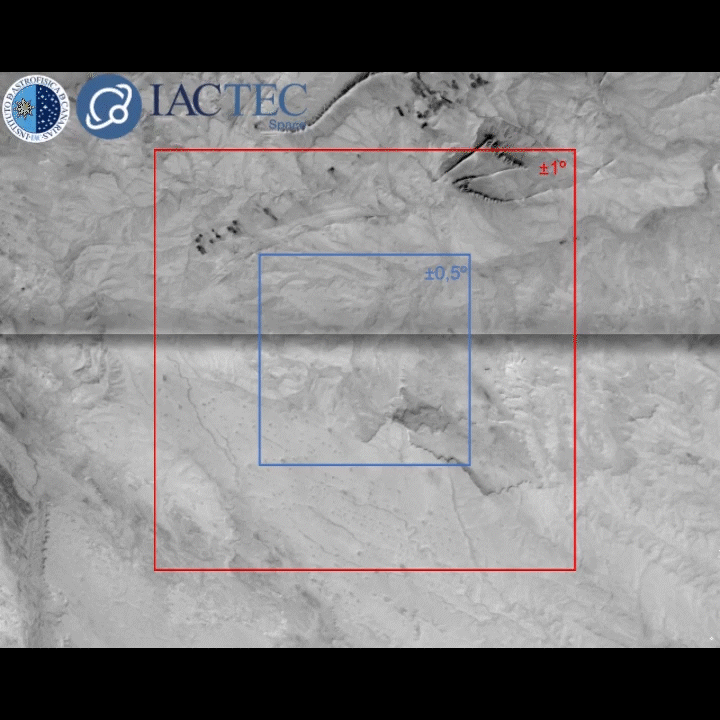
The team is also preparing a system so that the images obtained by DRAGO-2 on a regular basis can be exploited by third parties. "In addition to producing humidity maps of the observed areas, the system will allow the information obtained by DRAGO-2 to be cross-referenced with other Earth observation satellites," says Carlos Colodro, the team's electronics engineer in charge of processing the first ALISIO-1 images.
The success of ALISIO-1 opens up the possibility of developing a constellation of several ALISIO satellites that can provide images with a revisit time of a day or even a few hours. It also lays the groundwork for more complex missions such as VINIS, a new instrument for Earth monitoring that will observe in multiple bands of the visible and infrared spectrum with a resolution of less than 5 metres per pixel, and IACSAT Astro-1, the IAC's first space telescope that will be used to confirm new Earth-like exoplanets and to study and monitor near-Earth asteroids.
For the development of the ALISIO-1 satellite, the IAC has collaborated with the company Open Cosmos, responsible for the design and manufacture of the satellite platform. Deimos and D-Orbit, responsible for the in-orbit gate, also participated in the mission.
IACTEC-Espacio is an integrated programme within IACTEC, the IAC's technological and business collaboration space, which has the financial support (Training Programme, under the TFINNOVA Programme, the Strategic Framework for Island Development (MEDI), the Canary Islands Development Fund, the Canarias Avanza con Europa programme financed with ERDF funds), and infrastructure (IACTEC building) of the Island Council of Tenerife. The ALISIO-1 mission is funded by the Ministry of Science, Innovation and Universities from the NextGenerationEU funds through the Spanish Government's Recovery, Transformation and Resilience Plan.
More information:
Contact at the IACTEC:
- Alfonso Ynigo: alfonso.ynigo.rivera [at] iac.es (alfonso[dot]ynigo[dot]rivera[at]iac[dot]es)
- Álex Oscoz: alex.oscoz [at] iac.es (alex[dot]oscoz[at]iac[dot]es)

